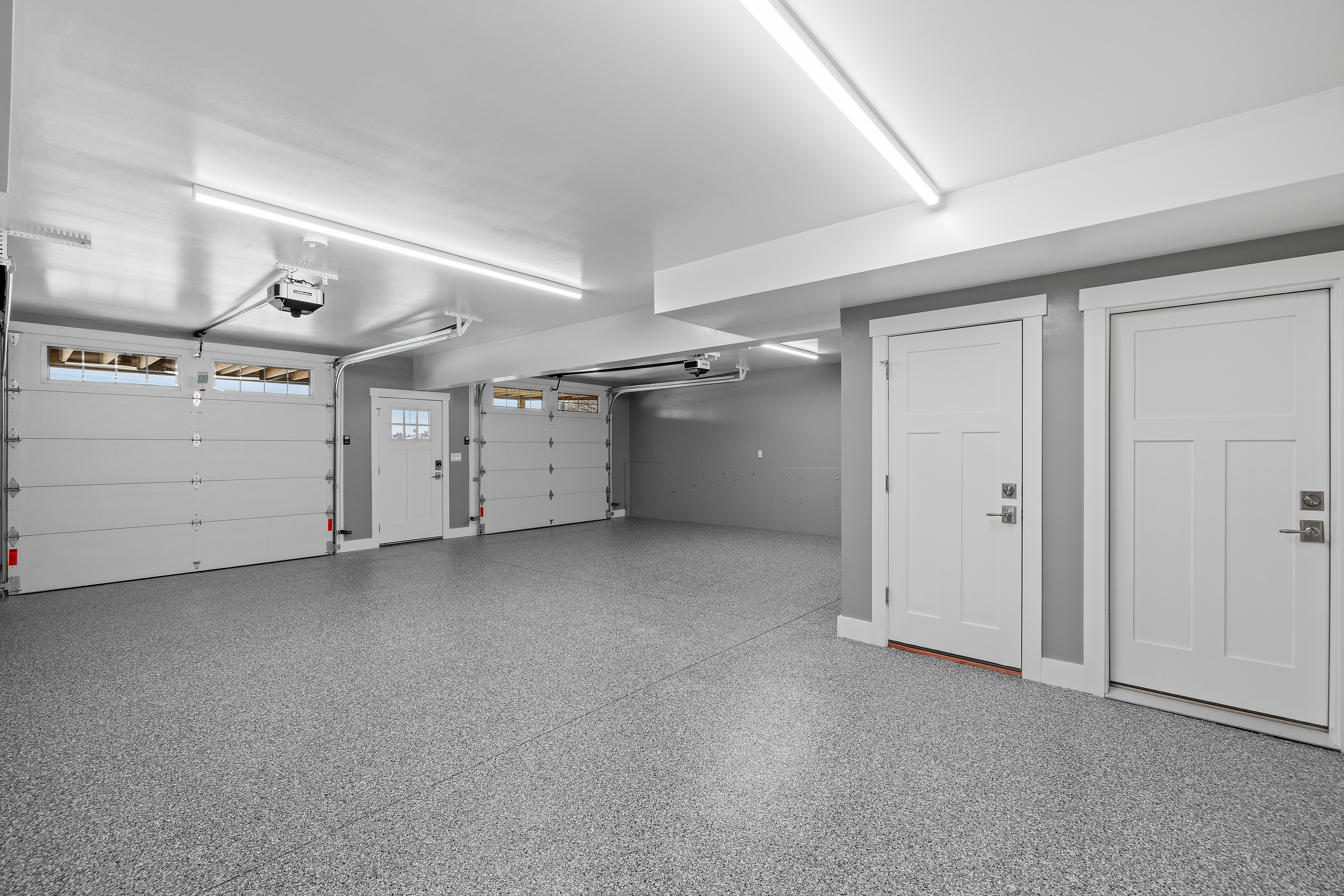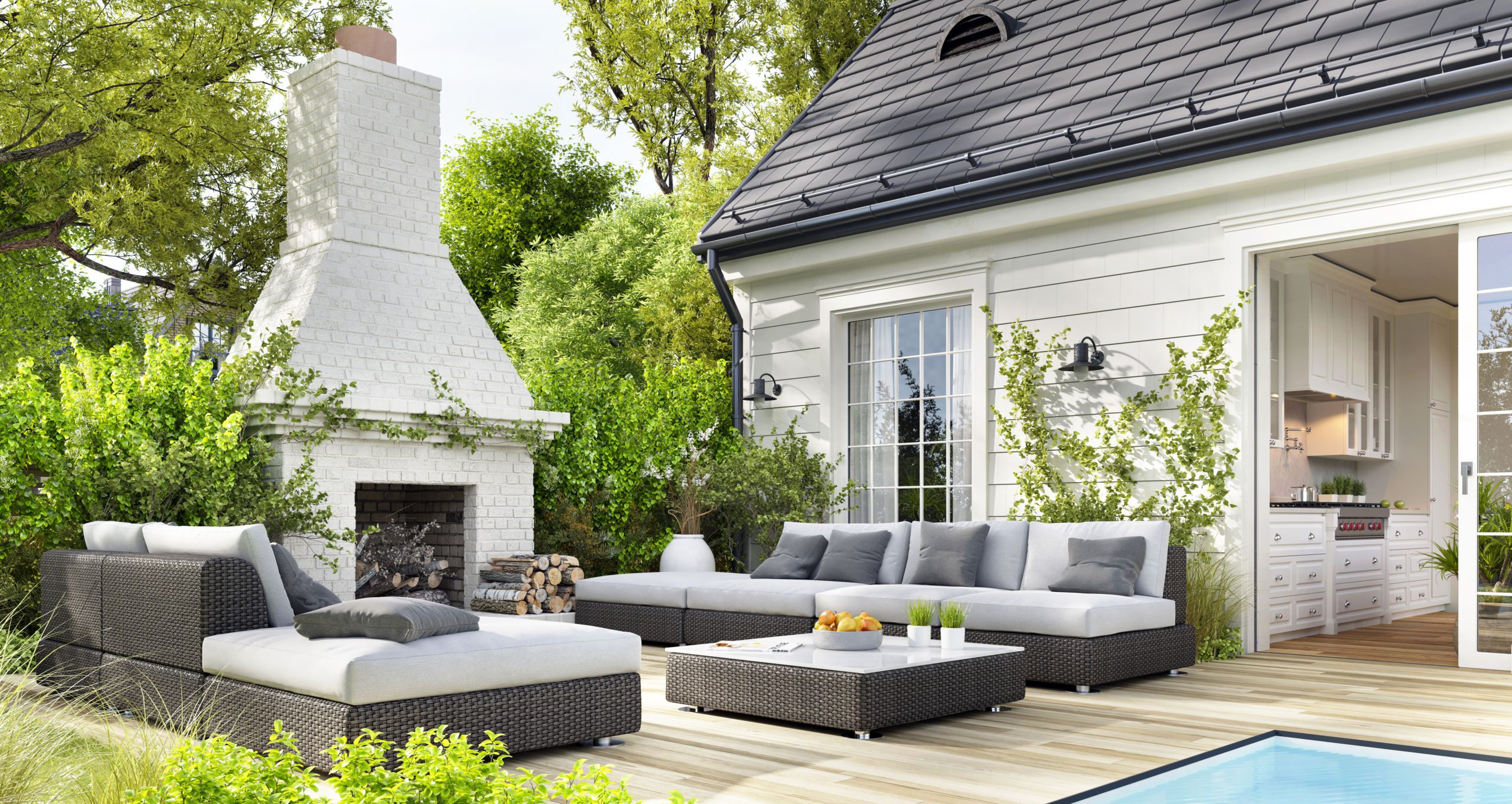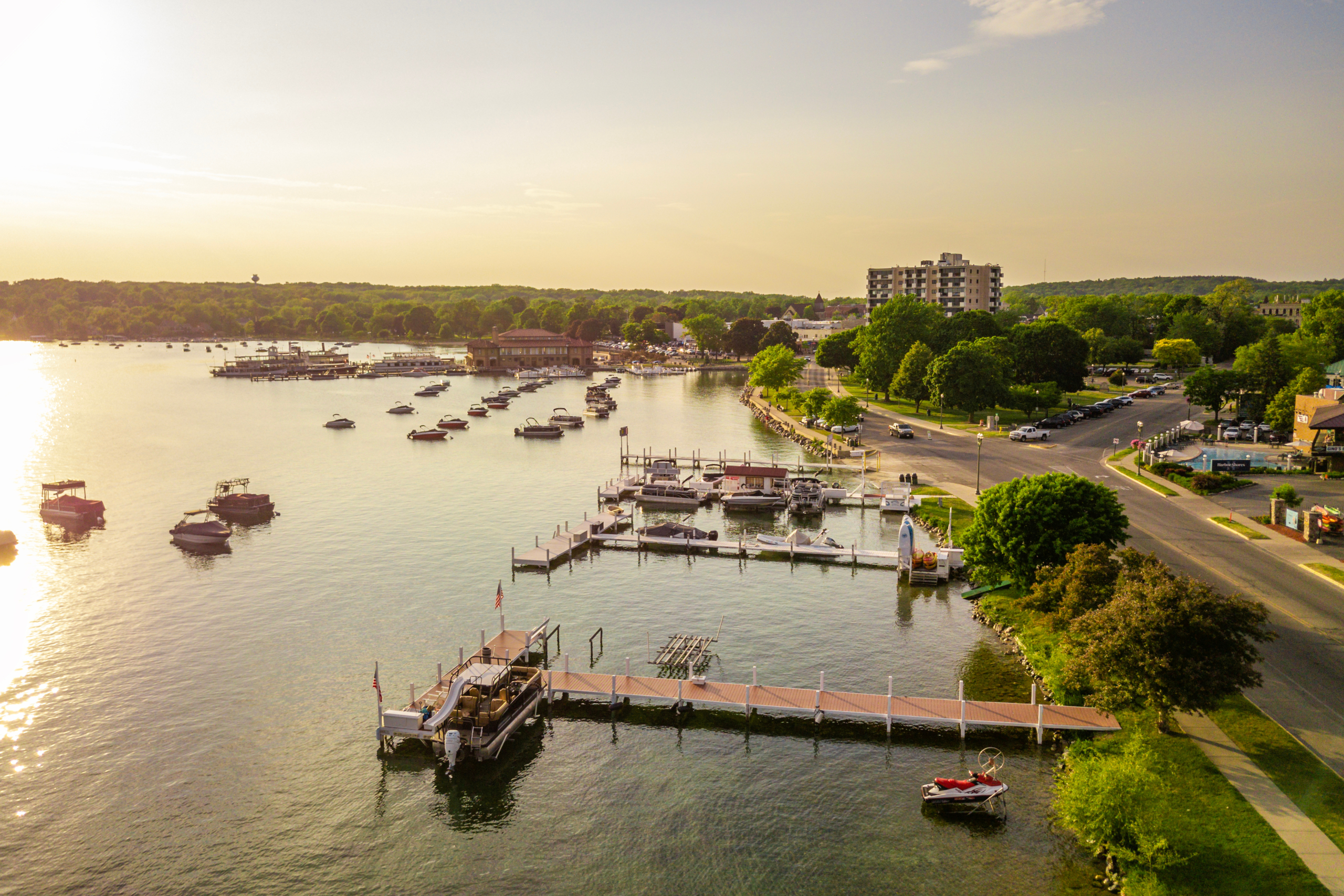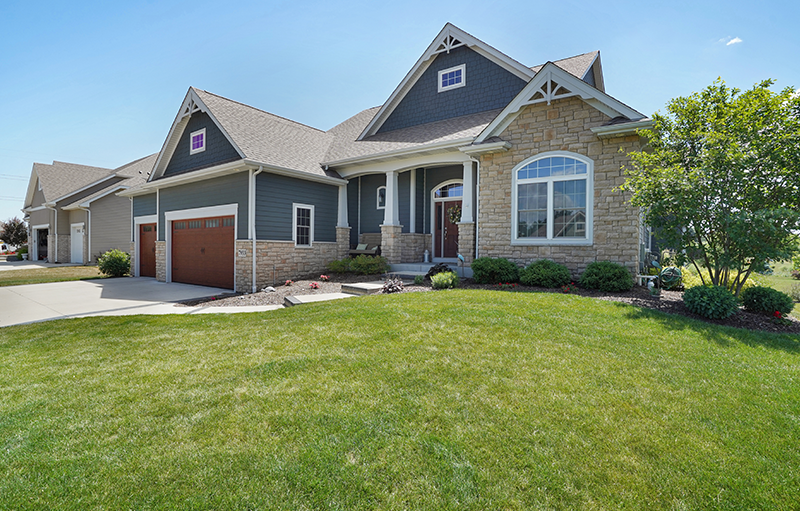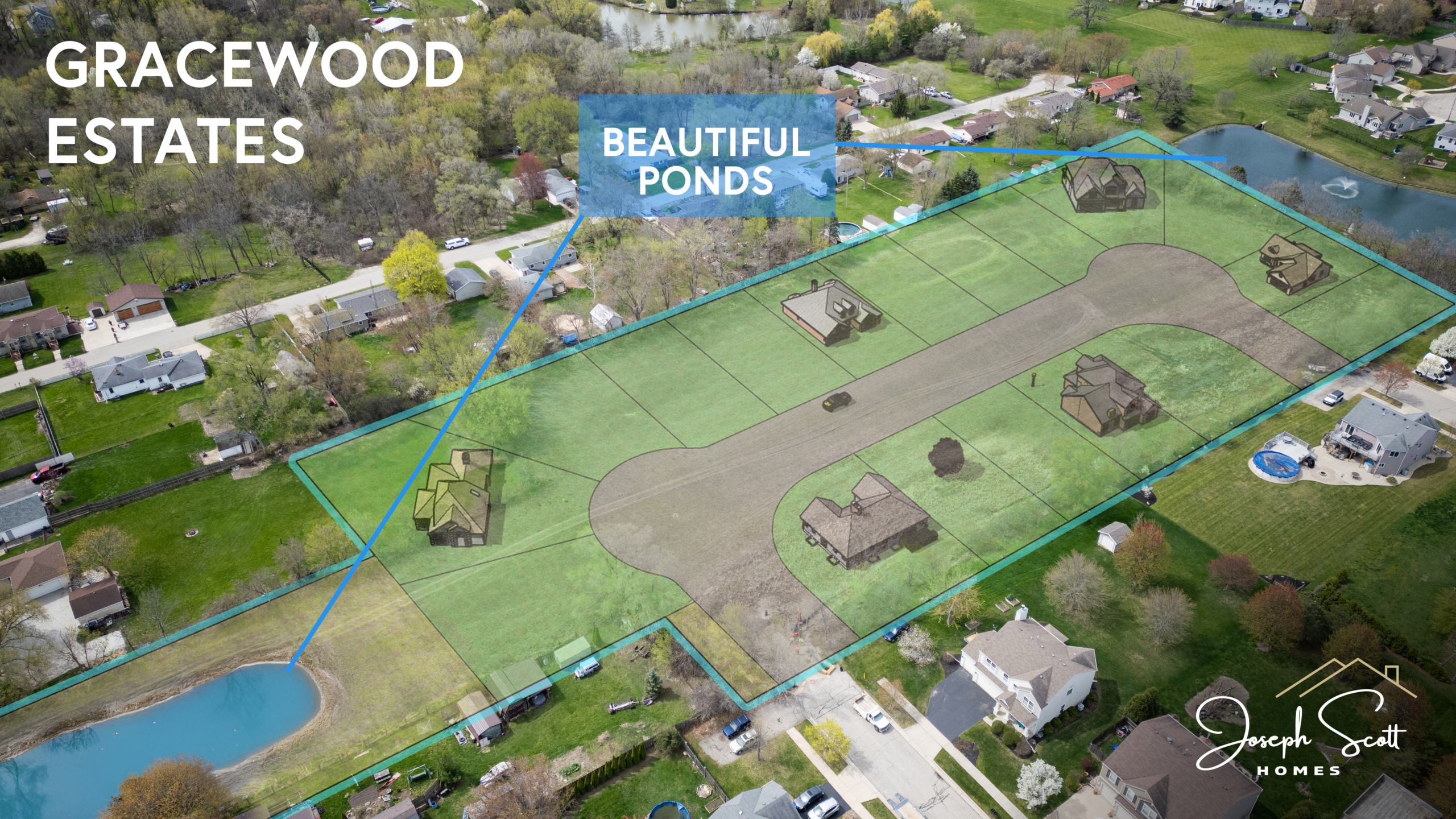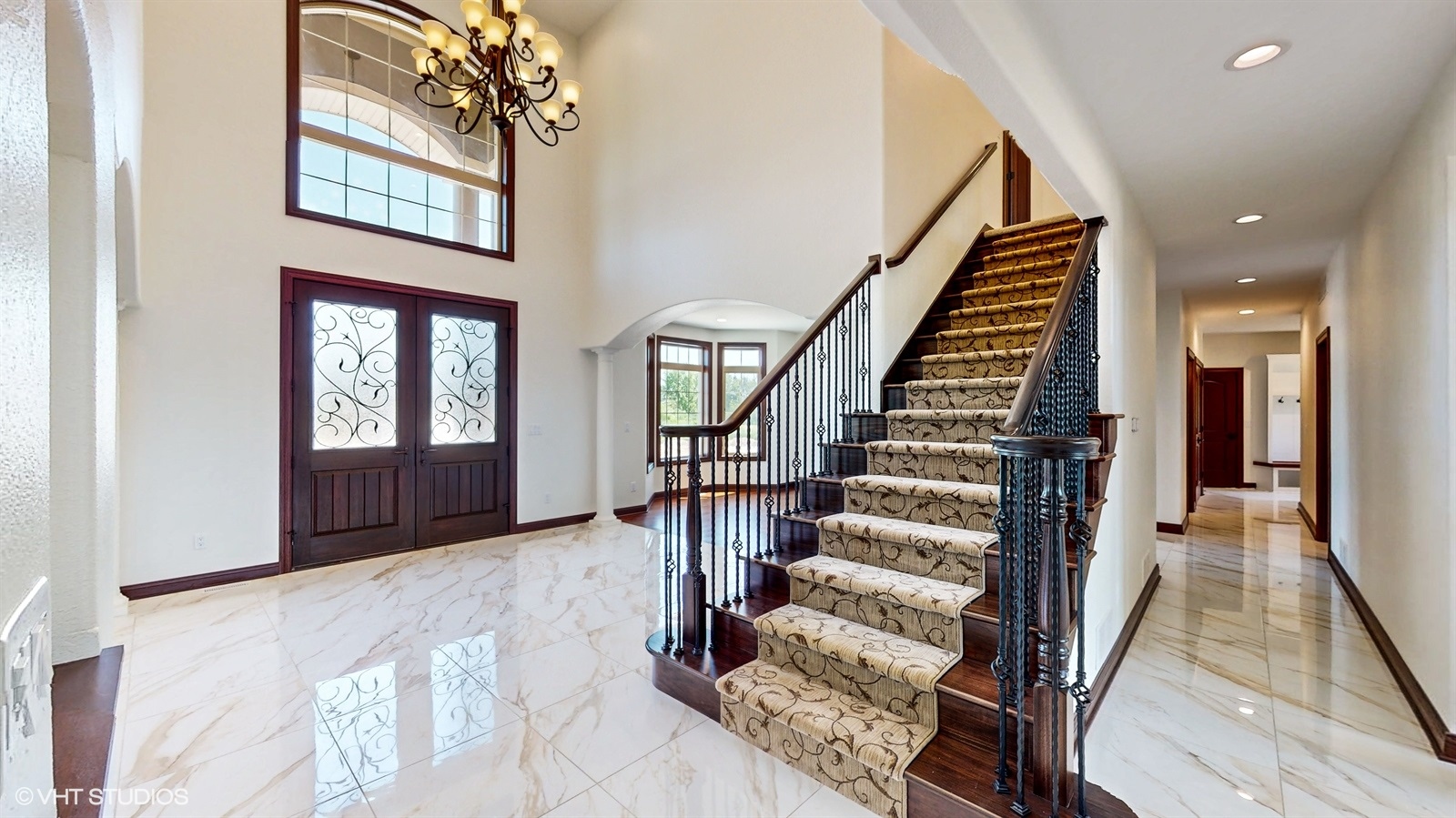Why a heated garage and snow-ready driveway are homeowner favorites in Wisconsin
Heated garage solutions and snow-ready driveways keep your home safer, cleaner, and more comfortable during long Midwest winters. They limit shoveling and ice buildup, protect vehicles and tools, and bring real day-to-day convenience that homeowners appreciate the moment the first flakes fall. At Joseph Scott Homes, we plan and build these systems into custom homes across Racine, Kenosha, Milwaukee, Waukesha, and Walworth Counties, pairing modern comfort with energy-efficient design so your investment performs well for years.
Whether you want a warm place to work year-round, a dry floor that limits salt and slush, or a driveway that melts snow on its own, there is a solution that matches your budget and goals. This guide explains how a heated garage works, what makes a driveway snow-ready, the pros and cons of each system type, typical costs in Southeastern Wisconsin, and practical installation advice if you are building new or upgrading your current home.
With over 40 years of experience, Joseph Scott Homes helps homeowners choose the right path. Founders James Joseph Fuchs and Michael Scott Lawrence remain involved in every project, so you receive clear communication, trusted craftsmanship, and a plan tailored to the way you live.
Heated garage options: find the right system for your space
A heated garage can be as simple as a quick-warming unit heater or as complete as radiant heat built into the slab. Your choice depends on whether you are in new construction or a retrofit, how often you use the space, and how you balance upfront cost with long-term efficiency.
Hydronic radiant floor heating
Hydronic radiant heat uses PEX tubing in the garage slab to circulate warm water from a boiler or high-efficiency water heater. The slab stores heat and releases it slowly, which keeps temperatures steady and the floor dry. For new builds, this is often the most comfortable and efficient approach.
- Comfort: Even heat from floor to ceiling, fewer cold spots, and a dry surface that resists condensation
- Efficiency: High thermal mass and lower operating temperatures can reduce energy use
- Best fit: New construction or major slab replacement, frequent year-round use, workshops and hobby spaces
- Considerations: Higher upfront cost, requires proper insulation under and around the slab, best performance with a sealed and insulated garage
Electric radiant floor heating
Electric radiant cables or mats can be embedded in thin-set or a topping layer above the existing slab. This is a simpler retrofit option when routing hydronic tubing is not practical.
- Comfort: Similar to hydronic, with steady heat underfoot
- Installation: Less complex than hydronic, ideal for smaller garages or targeted zones
- Best fit: Retrofits, spaces without gas service, spot-heating work areas
- Considerations: Electric rates impact operating costs, requires dedicated circuits and GFCI protection
Gas or electric unit heaters
Ceiling or wall-mounted unit heaters blow warm air into the garage and are quick to install. They are popular for large or tall spaces where radiant retrofits are not feasible.
- Comfort: Fast warm-up, simple controls, good for intermittent use
- Installation: Lower upfront cost and straightforward service access
- Best fit: Retrofits, larger garages, spaces that do not need 24-7 warmth
- Considerations: Warm air rises, so air stratification can occur without ceiling fans, venting and combustion air must be designed correctly for gas units
Infrared tube heaters
Infrared tube heaters warm objects and the floor directly, not just the air. They are common in shops and can work well in tall garages.
- Comfort: Warmth you can feel quickly, good for spot-heating work zones
- Efficiency: Reduces heat loss to the ceiling in tall spaces
- Best fit: High-bay garages, hobby shops, areas with frequent door openings
- Considerations: Clearance to combustibles is important, plan layout to avoid hotspots
Snow-ready driveway systems that clear themselves
A snow-ready driveway uses radiant heat under the pavement to melt snow and ice automatically. Sensors can activate the system when moisture and cold weather arrive, which helps maintain traction and reduces the need for plows, salt, and shoveling.
Hydronic snow-melt systems
Hydronic driveway systems circulate warm water through PEX tubing arranged in loops beneath concrete, pavers, or asphalt. A boiler or dedicated heat source keeps fluid at controlled temperatures. These systems are robust and efficient for large areas or steep driveways.
- Surface options: Concrete, pavers, and asphalt, with the right base and insulation
- Performance: Strong output for heavy snow events, zoning available for partial areas
- Best fit: Larger driveways, steep grades, long approaches, or shaded areas that ice up
- Considerations: Higher upfront cost, best installed during new paving or a complete replacement
Electric snow-melt systems
Electric snow-melt mats or cables are placed under the surface and controlled by sensors and timers. They are simple to install during a re-pour or resurfacing, and can be targeted to tire tracks or walkways.
- Flexibility: Ideal for partial coverage such as walkways, steps, or parking pads
- Control: Quick response with automatic sensors and remote app control
- Best fit: Small to medium areas, retrofits, homes without gas
- Considerations: Operating costs vary with electricity rates, requires proper electrical capacity
Costs and what to expect in Southeastern Wisconsin
Costs vary by size, system type, access, and whether the project is new construction or a retrofit. The ranges below reflect typical installations in Racine, Kenosha, Milwaukee, Waukesha, and Walworth Counties. Your exact price will depend on design, insulation, controls, and finishes. Joseph Scott Homes provides clear, line-item proposals so you know where every dollar goes.
Heated garage cost ranges
- Hydronic radiant in a new slab: About 6 to 16 dollars per square foot for tubing, manifolds, and labor, plus the heat source if dedicated
- Hydronic radiant retrofit with a new slab or topping: About 15 to 30 dollars per square foot depending on demolition, insulation, and access
- Electric radiant floor: About 8 to 20 dollars per square foot, often best for smaller zones
- Gas or electric unit heater: About 1,200 to 3,500 dollars installed for typical two to three car garages, more for high-output models
- Infrared tube heater: About 2,000 to 5,500 dollars installed based on length and output
Snow-melt driveway cost ranges
- Hydronic snow-melt in new concrete or pavers: About 12 to 28 dollars per square foot, plus heat source and controls
- Hydronic retrofit or full replacement: About 20 to 40 dollars per square foot depending on tear-out, base preparation, and layout
- Electric snow-melt mats or cables: About 10 to 25 dollars per square foot for materials and labor, plus sensors and controls
Operating costs and ways to save
Operating costs depend on winter severity, energy rates, and system design. Hydronic systems can be fueled by natural gas, propane, or high-efficiency heat sources. Electric systems draw power directly and often shine in smaller areas or targeted lanes.
- Reduce run time with moisture and temperature sensors that turn systems on only when needed
- Use zones for partial coverage, like tire tracks or high-traffic sections
- Improve insulation under slabs and at slab edges to keep heat where it belongs
- Seal garage doors and add proper weatherstripping to cut heat loss
- Consider a high-efficiency boiler or heat pump where conditions allow
Installation timeline and tips
Good planning creates better performance and lower long-term costs. Joseph Scott Homes integrates heated garage and snow-melt designs early in the process, coordinating with structural, electrical, plumbing, and paving scopes to avoid surprises.
New construction best practices
- Assess goals: Decide if you want a full heated garage, targeted zones, or snow-melt on the driveway, steps, and walks
- Model the loads: Size the boiler or electrical service for peak winter conditions, including simultaneous household demands
- Build the base: Use compacted base, vapor barrier, and rigid foam insulation under and around slabs
- Lay tubing or cables: Keep consistent spacing, follow manufacturer bend radius, and map locations for future reference
- Set controls and sensors: Install slab sensors, aerial sensors, and a smart thermostat or automation tied to weather
- Pour and finish: Use concrete mixes suited for freeze-thaw cycles, include air entrainment, and finish with traction-friendly textures
- Commission the system: Pressure test tubing, verify sensor function, and set initial schedules
Retrofitting an existing garage or driveway
Retrofits can deliver great results with the right plan. The key is a careful assessment of structure, electrical capacity, and drainage.
- Garage retrofits: Electric radiant over existing slab with a new topping layer is often the cleanest path, and unit heaters can provide fast warmth with minimal disruption
- Driveway retrofits: Most require a full tear-out to add insulation and heating elements correctly, though targeted approaches along tire tracks can reduce cost
- Electrical upgrades: Snow-melt and electric radiant may need new circuits or a service upgrade
- Drainage and slope: Confirm proper slope away from the garage and add trench drains or channel drains if needed
Smart controls and sensors
Smart controls make a big difference in comfort and efficiency. Systems can start before snowfall, melt faster during storms, and shut off when surfaces are dry.
- Moisture and temperature sensors for automatic activation
- Weather-based preheat to reduce lag time
- App control for status checks and manual overrides
- Zoning to prioritize areas like the apron, walkway, and steps
Safety, codes, and maintenance
Safety is part of every heated garage and snow-melt design. Joseph Scott Homes works with trusted vendors and licensed trades to meet Wisconsin codes and manufacturer guidelines.
Safety must-haves
- Electrical protection: GFCI and AFCI where required, proper breakers, and grounded connections
- Combustion safety: Correct flue venting, combustion air for gas appliances, and a carbon monoxide detector
- Clearances: Respect minimum distances for infrared heaters and unit heaters
- Freeze protection: Glycol mix for hydronic systems where needed to prevent freezing during power outages
- Surface safety: Use textured finishes or pavers and consider snow-melt zones at steps to prevent slips
Maintenance checklist
- Annual inspection of boilers, pumps, and valves
- Check glycol concentration and pH for hydronic systems
- Test sensors and thermostats before winter
- Clean unit heater filters and verify vent terminations are clear
- Look for cracking or settlement in slabs and fix drainage issues promptly
Design details homeowners love
Performance matters, and so do the final touches that make daily life simpler. These details help you get the most from a heated garage and snow-ready driveway.
- Floor finishes: Durable epoxy or sealed concrete for easy cleanup and stain resistance
- Storage planning: Wall systems and ceiling racks that keep floors clear for even heat and airflow
- Work zones: Insulated walls, bright LED lighting, and dedicated 120-volt and 240-volt outlets for tools
- Air quality: Exhaust fans or heat recovery ventilation for projects that create fumes
- Entry experience: Snow-melt at the apron and front walk for clean shoes and safer steps
- Curb appeal: Paver patterns that highlight the driveway and handle temperature swings well
How Joseph Scott Homes delivers long-lasting value
Joseph Scott Homes is a custom builder based in Mount Pleasant, Wisconsin, with a four-decade track record of quality, communication, and care. We tailor every heated garage and snow-melt plan to the home and the homeowner, balancing comfort, efficiency, and cost. Founders James Joseph Fuchs and Michael Scott Lawrence remain hands-on with every project, so your voice is heard from concept to completion.
Our process and communication
We begin with a practical needs assessment and a clear budget. Next, we coordinate with our trusted vendors and subcontractors to align structure, mechanical systems, and finishes. You will know what to expect at every step, including timelines for slab prep, tubing or cable installation, electrical work, and final commissioning. Our full-service real estate support, including lot locating and analysis, helps ensure that site conditions support the system you want.
Energy efficiency and sustainability
Joseph Scott Homes emphasizes energy-smart decisions. We recommend insulation that meets or exceeds code, high-efficiency equipment, and controls that limit run time. We also use durable, sustainable materials that stand up to Midwest winters and protect long-term value. The result is a quiet, comfortable heated garage and a snow-ready driveway that works hard while keeping utility costs in check.
Where we build
Our team serves Racine, Kenosha, Milwaukee, Waukesha, and Walworth Counties. We know the local codes, climate, and soil conditions, which helps us design systems that perform well in the worst weather. Whether you are building on a rural lot, in a neighborhood, or near the lake, we will tailor the design to your site and lifestyle.
Frequently asked questions about heated garages and snow-ready driveways
Do heated garages cause rust on vehicles? A heated garage does not cause rust by itself. Rust forms when salt and moisture sit on metal for long periods. A warm, well-ventilated garage that dries quickly can reduce moisture exposure. Rinse vehicles regularly to remove salt.
Can I heat only part of my garage? Yes. Zoning allows you to heat a workbench area or a single bay. Electric radiant or infrared heaters are great for targeted zones.
Do snow-melt systems damage concrete? No, when installed correctly. In fact, snow-melt reduces freeze-thaw cycles and salt use, which helps protect surface durability. Use proper mixes and jointing for the best results.
What if the power goes out during a storm? Hydronic systems with glycol are protected from freezing. Backup power for controls and pumps can add peace of mind. Electric systems require utility power or a generator sized for the load.
Can I add snow-melt to existing pavers? Yes, but it usually requires lifting pavers, improving the base and insulation, placing mats or tubing, then reinstalling pavers. This is a good time to address drainage as well.
Are there rebates or incentives? Programs vary by utility and season. Joseph Scott Homes can help you evaluate potential incentives for high-efficiency equipment and controls, and we will design your system to meet program requirements when available.
Ready to plan your heated garage or snow-ready driveway
A heated garage and a snow-ready driveway bring comfort, safety, and convenience to everyday life. With the right design and a trusted builder, you can enjoy clear paths, a clean garage floor, and a warm space for hobbies and maintenance through the coldest months.
Joseph Scott Homes is ready to help you choose the right solution, set a transparent budget, and build with care. From concept to commissioning, we will keep you informed and make sure the finished system matches your needs and your home. If you want a heated garage that feels like part of the house and a driveway that takes winter in stride, talk with our team and discover what homeowners across Southeastern Wisconsin love.
Contact Joseph Scott Homes to schedule a consultation. We will review your goals, show sample layouts and cost options, and create a plan that fits your property and lifestyle. A warmer, safer, snow-ready home is closer than you think.

